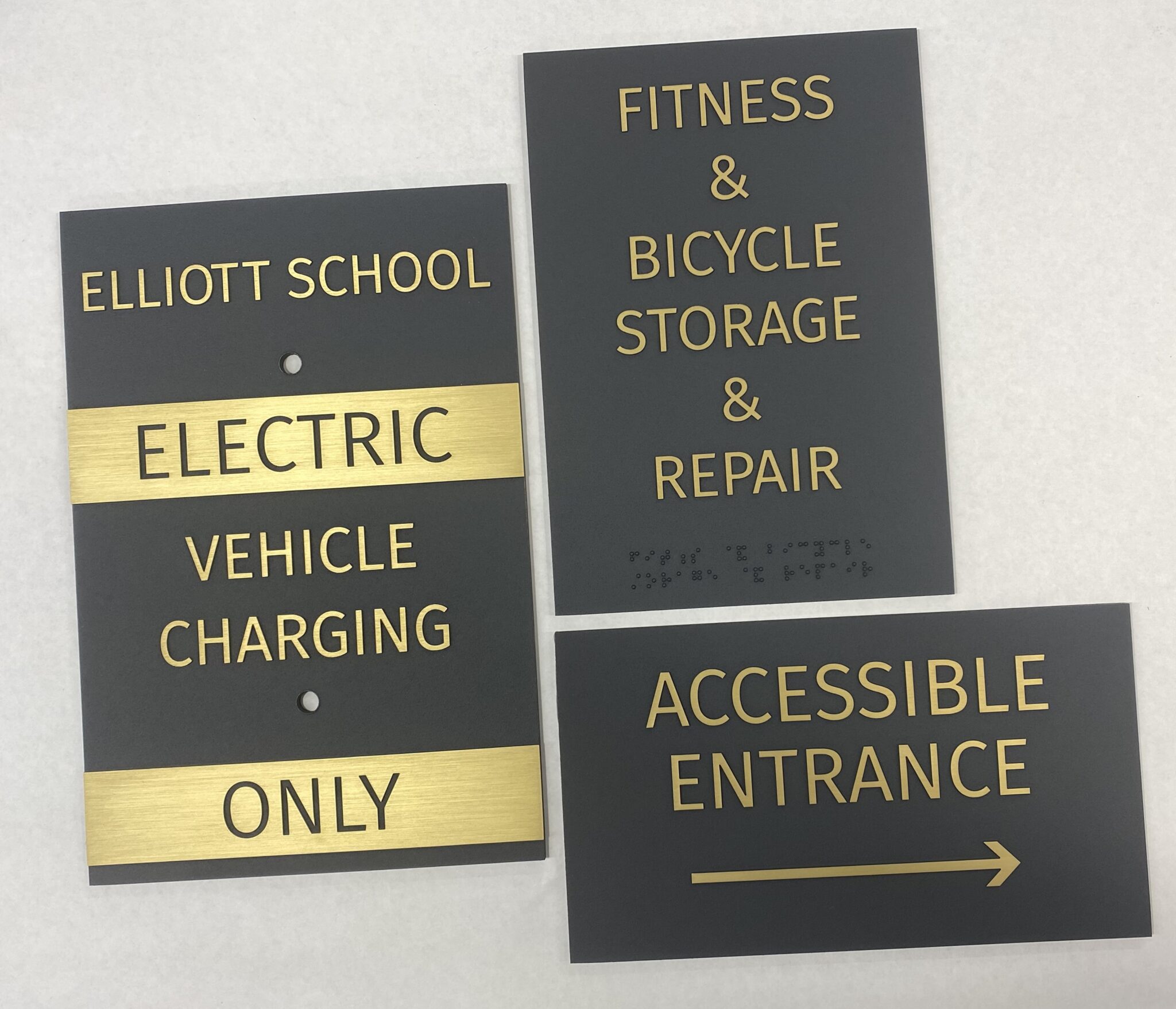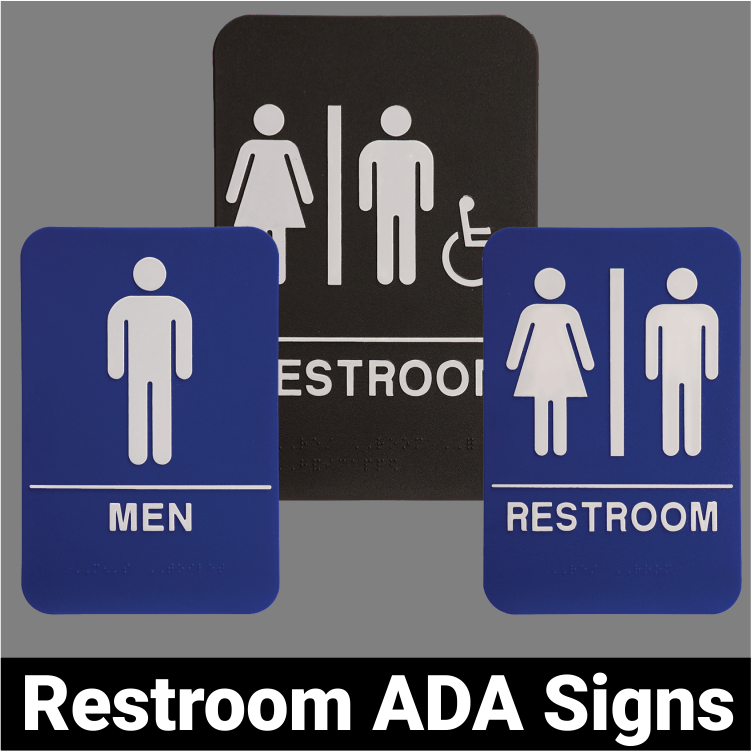The Duty of ADA Signs in Following Accessibility Criteria
The Duty of ADA Signs in Following Accessibility Criteria
Blog Article
ADA Signs: Ensuring Accessibility and Compliance in Public Spaces
ADA signs plays an important function in guaranteeing availability and conformity within public spaces, considerably contributing to an inclusive atmosphere for individuals with handicaps. By adhering to ADA criteria, signs not only helps with navigation but additionally emphasizes an organization's dedication to diversity and equality. As we discover the subtleties of ADA signage, from responsive functions to develop intricacies, it's essential to think about exactly how these aspects coalesce to copyright the civil liberties of all customers. What are the typical risks organizations deal with in keeping conformity, and just how can future patterns in signage proceed to drive availability forward?
Significance of ADA Signs
In modern-day culture, the relevance of ADA signage prolongs beyond mere compliance with lawful mandates to symbolize a dedication to inclusivity and access for all individuals. These signs are necessary in creating settings where people with specials needs can browse public areas with the very same convenience and freedom as those without handicaps. By offering clear and standardized information, ADA signs makes certain that everyone can access facilities, solutions, and info without barriers.
The value of ADA signage depends on its capability to boost the high quality of life for individuals with disabilities by promoting equivalent accessibility. It eliminates the barriers that could or else hinder their capacity to participate fully in community life. Moreover, these indicators offer as noticeable signs of a company's devotion to variety and equality, showing broader societal values that promote the legal rights and dignity of all people.
Additionally, ADA signage plays an important function in public safety. By guiding people to exits, restrooms, and other important centers, it makes certain that all individuals, no matter of physical capacity, can leave securely during emergencies. In summary, ADA signs is not simply a governing demand however an effective device for promoting a equitable and inclusive culture.
Crucial Element of Compliance

Placement is important; signs need to be installed in locations that are obtainable and quickly noticeable. Normally, signs ought to be placed in between 48 and 60 inches from the ground to make certain accessibility for both standing and mobility device customers. Tactile components, such as Braille, are necessary for individuals with aesthetic problems, supplying crucial info in a non-visual layout.
High-contrast shades between the text and history are needed to enhance readability for individuals with reduced vision. The ADA mandates details comparison ratios to make sure quality. Furthermore, character dimension is an essential factor to consider, with minimum height needs dictated by the seeing distance to guarantee readability from different angles.
Design Considerations for Accessibility
Designing available signs calls for a thorough approach to guarantee it fulfills the needs of all individuals, particularly those with specials needs. The dimension of the message is just as crucial, with ADA standards suggesting a minimal elevation based on viewing distance to guarantee readability.
Contrasting colors in between text and history are necessary for presence, particularly for people with visual problems. A high contrast ratio aids identify the text from its history, enhancing readability under numerous illumination conditions. In addition, responsive aspects, such as Braille and increased personalities, are crucial for people who are blind or have reduced vision. These aspects ought to be located at a constant elevation and position to guarantee very easy access and understanding.
Furthermore, the positioning of signage plays a considerable function in access. Indicators ought to be set up in places that are unblocked and easily reachable. Guaranteeing that signs is placed at proper heights and angles enables all customers, consisting of those using wheelchairs, to connect with them effectively.
Common Mistakes to Prevent

An additional prevalent mistake is the incorrect placement of signs. ADA guidelines define exact height and area requirements to make sure that signs are quickly noticeable and obtainable by all individuals, consisting of those important source using wheelchairs. Neglecting these guidelines not only interferes with availability but additionally takes the chance of non-compliance with lawful standards.
In addition, insufficient comparison in between message and history is a frequent oversight. Ample contrast is essential for readability, especially for individuals with reduced vision. Developers sometimes pick colors that are visually attractive however lack the necessary contrast, providing the message difficult to determine.
Last but not least, some designers fall short to include tactile aspects, such as Braille, which are vital for people that are blind. Leaving out these attributes not only causes non-compliance with ADA laws but additionally limits gain access to for a sector of the population that depends on responsive details.
Future Trends in Signs
Improvements in innovation and enhancing recognition of inclusivity are forming the future trends in signs design. As culture becomes more aware of diverse demands, the combination of wise modern technologies into signage is acquiring grip. Digital signage, for circumstances, is progressing to include interactive functions and real-time updates, which can be crucial in giving dynamic info in public rooms. These indications frequently include touch displays or gesture-based controls, enabling individuals to navigate content customized to their details requirements.
One more arising pattern is the application of augmented truth (AR) to enhance user experience. AR-enabled signs can overlay electronic information onto the physical atmosphere, giving visually damaged people with auditory or haptic comments. ADA Signs. This modern technology not just improves access but likewise creates an appealing experience for all users
Sustainability is likewise a substantial variable influencing signage fads. Eco-friendly materials and energy-efficient lights solutions are being prioritized to align with international ecological goals. Innovations in materials science are leading to the growth of even more weather-resistant and sturdy indicators.
Conclusion
ADA signage plays an essential duty in ensuring availability and conformity within public rooms by integrating responsive elements, high-contrast shades, and strategic placement. The adherence to ADA standards not only helps with risk-free navigation for individuals with specials needs but likewise represents an organization's dedication to variety and inclusivity. By staying clear of usual blunders and welcoming future patterns, public areas can proceed to progress these values, guaranteeing that the legal rights and dignity of all individuals are respected and maintained.
ADA signs plays an essential role in guaranteeing accessibility and conformity within public rooms, substantially adding to a comprehensive go to this site atmosphere for individuals with impairments. As we explore the subtleties of ADA signs, from tactile features to design details, it's vital to think about exactly how these elements integrate to maintain the rights of all users.In modern-day society, the relevance of ADA signage extends past simple compliance with lawful mandates to personify a dedication to inclusivity and access for all people. By offering clear and standard information, ADA signs guarantees that everyone can access centers, services, and details without obstacles.
ADA signage plays a explanation vital function in guaranteeing access and compliance within public rooms by integrating responsive aspects, high-contrast shades, and calculated positioning. (ADA Signs)
Report this page